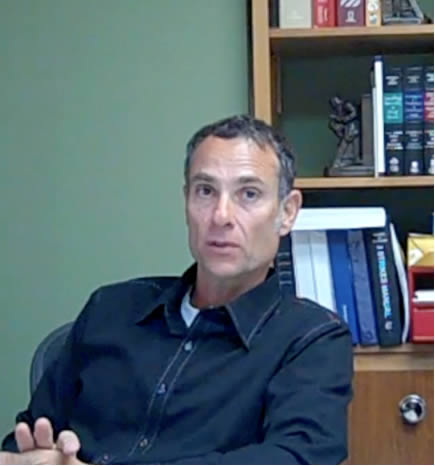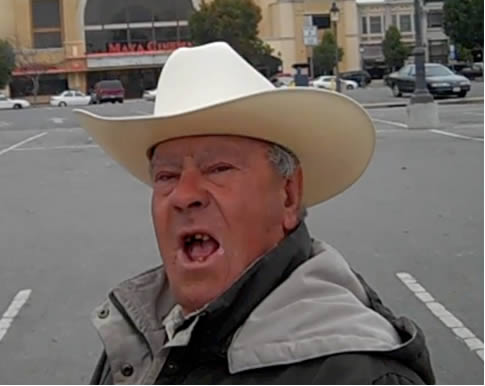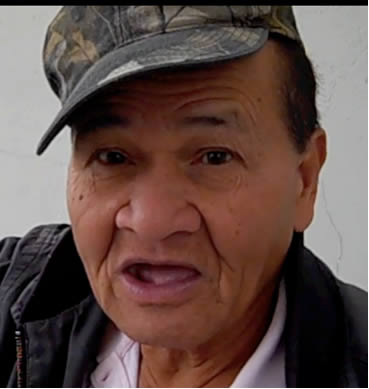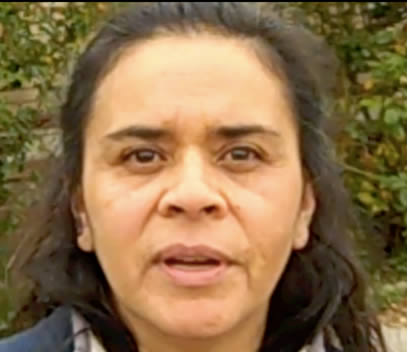Monday afternoon I push the intercom at Inazone, buzzing with excitement and pot smoker paranoia. A stocky white dude in his late twenties wearing khaki shorts and a black T-shirt comes out of the cement block building to unlock the steel grated gate. He’s got a shaved head and bulging biceps. I flash Dr. Schlater’s referral.
“Is this your first visit?” he asks.
“Yes, sir.”
“I’ll need you to fill out some forms. There’s several pages.”
I follow bulging biceps through a courtyard into a windowless waiting room furnished with used couches, a desk, and a copy machine. There’s a strong ambient odor of cannabis, but no smoke or paraphernalia.
“I’ll need your driver’s license, too,” he says.
The microscopic little bastards with ice picks pound on my heart. I’m thinking this is the end, my friend. When bulging biceps sees that my license is from New York and not California, he’s going to kick my ass out. Instead, he just runs it through the copy machine without comment, and hands it back.
I sit down on a ratty brown couch and fill out the forms. There’s a space near the top of the first page marked “California Driver’s License #.” I leave it blank. When I hand the clipboard back to bulging biceps, he sticks the forms in a manilla folder without reviewing them.
“Please sign the register,” he says, gesturing toward a ringed binder on the desk. “Also, print your name, the date, and the time.”
I get the time from a digital clock conveniently positioned between the register and a notice printed on a sheet of stationary. The notice reads: “We understand that pain can be hard to assess, so we allow two (2) visits per day.”
Bulging biceps knocks on a large steel door on the cement block wall closest to the desk. Seconds pass. The microscopic little bastards with ice picks go at my lungs, making me gasp for breath. Then the steel door opens. Two black dudes in their mid-thirties exit the door. They give bulging biceps hippie hand grips.
“Thanks, man,” the black dudes say.
Bulging biceps ushers me into a space about twice the size of my motel room. Once again, it’s show time for the one man traveling broadband. I should be taking in all the sights and sounds, jotting impressions on the reporter’s notebook of my mind. I’m not stoned, but it’s almost impossible. Why? Because at a glance, it all looks too good to be true. I’m sure the cops are going to bust in any second.
I... am... so... paranoid...
The one thing I can’t miss is the almost overpowering sweet smell of cannabis. Although there’s not a whiff of smoke in the room, it permeates every molecule of air. No wonder. In front of me are three glass cases full of tetrahydrocannabinol (THC) based consumables: green marijuana buds, pre-rolled joints, hash brownies, hash muffins, and hash cookies, along with the legally questionable nasal sprays and lip balms Dr. Schlater mentioned.
I also notice three enlarged black and white photographs of Bob Marley hanging on the wall to my right. They compose a sequence triptych of the reggae legend in various stages of smoking a joint.
“Hi,” says a tall, reefer thin white dude standing behind the counter. Or maybe he means “high.” Whatever, I say “hi/high” back as I scan the contents of the glass cases.
“This is like my first visit,” I add, slipping into similaic California slang. “Is there like a menu?”
“Yes, sir,” he replies like a well mannered waiter.
Reefer dude hands me a laminated sheet divided into two columns like a Chinese restaurant menu. Column A on the left comprises five varieties of sativa, the so-called “up” pot, captioned on the menu with the words “stimulus, anti-depressant, chronic pain, focus, creative.” The sativa has names like “Sour Diesel” and “Hindu Hush.” Amounts range from one-sixteenth to one-quarter of an ounce with prices between $40 and $80.
Column B on the right side of the menu comprises five varieties of indica. Similarly portioned and priced indica, this so-called “down” pot is captioned as “sedative, acute pain, nausea, anxiety, appetite,” and has names like “Northern Lights” and “Shiva.” I’m like a kid in a candy store full of prohibited treats that are simply irresistible.
“I want to spend like $100,”I say. “Maybe I’ll try like one from column A and like one from column B.”
Just because I like the names, I pick the sativa Sour Diesel and the indica Northern Lights in one-eighth portions. Reefer dude weighs them out on a scale, and puts them in plastic bags which he helpfully labels so I’ll be able to tell which is which.
“Normally, it’s $60 a bag,” he informs me. “But since this is your first visit, I’ll give both to you for $100.”
I hand him five twenty dollar bills, and drop a five spot in the tip jar.
“Thanks,” I say. “Appreciate it, sir.”
A women in her late sixties with frizzy red hair emerges from a side door clutching the leash of a brown bull terrier.
“Have some hash!” she screams.
“Better wait until my next visit,” I reply. “I gotta like drive.”
Reefer dude places my purchases in a paper sack. I stuff the sack into the pocket of my jacket, and exit through the steel door and the waiting room to the courtyard. Bulging biceps is standing by the steel grilled gate. I give him the same hippie hand grip as the black dudes.
“Thanks, man.”
“No, problem, man,” he says. “Hope you feel better.”
###

Paranoia strikes deep, as Crosby, Stills, and Nash sing in their Woodstock era hit “For What it’s Worth,” and into my life it continues to creep. After stashing my newly purchased pot inside a duffel bag in my motel, I make a beeline for the Beverly Hills office of William S. Kroger, an attorney specializing in marijuana cases. According to Dr. Schlater, he can explain the ins and outs of the Prop 215 statutes better than any judge or law professor.
Lean and short-haired with intense brown eyes, Kroger greets me wearing a stylish black shirt and jeans, insisting that I call him Bill. I flash Dr. Schlater’s referral again.
“This thing worth the paper it’s printed on?” I ask. “If a cop stops me, is it a get out of jail free card?”
“Yes, absolutely,” Bill replies. “The law in California allows you to possess up to 8 ounces of marijuana if you’re a qualified patient with a doctor’s recommendation. You’re also allowed to grow six mature marijuana plants each year for your own use.”
But as Bill points out, there are numerous legal gaps and gray areas involving medical marijuana. Technically, a physician like Dr. Schlater can only “recommend” rather than “prescribe” cannabis to a patient because it’s still classified as a Schedule I controlled substance under the federal Controlled Substance Abuse Act.
Likewise, the legality of the medical marijuana supply chain remains iffy at best. Under California law, a designated “caregiver” is allowed to grow six marijuana plants per patient per year. Technically, the folks back at Inazone are now my caregivers. They’re also the caregivers for however many scores of other patients they have on their registry. That means Inazone can probably claim the right to grow hundreds of marijuana plants every year.
But if a cop catches an Inazone employee or supplier transporting more than eight ounces of pot, they might eventually beat the rap but they might not be able to avoid the ride to jail. In any case, California law still prohibits the sale of marijuana to people who don’t have a doctor’s recommendation, and it’s illegal for a patient to sign up with more than one caregiver with the intent of hoarding more than six plants.
Earlier in the year, the Obama administration directed federal law enforcement officials not to arrest or prosecute people who are in compliance with laws in California and a dozen other states that permit the use of medical marijuana. Bill reminds that’s just an executive order, not a comprehensive reform of federal law.
“The federal government has to declare that they’ve done the necessary research and have concluded that there are 14 or 15 conditions for which cannabis is good for patients,” he says. “Then they have to officially remove it from the list of scheduled substances so people can use it for medical purposes.”
“So the point is, the feds need to get on the same page as the states?”
“Precisely.”
Meanwhile, the proliferation of medical marijuana dispensaries in Los Angeles is a hot political issue. CNN recently reported that there are more pot retailers in L.A. than Starbucks brand coffee houses. I hand Bill Kroger a clipping from the front page story of today’s Loa Angeles Times headlined “L.A. hopes to get a handle on pot.”
“For a moment two years ago, Los Angeles officials thought they knew how many marijuana dispensaries the city had: 186,” the paper reports. “That’s how many registered to operate under the city’s moratorium. The city quickly lost control, and the number soared: 500, 600, 800, now perhaps 1,000.”
Bill insists that the actual number of dispensaries currently operating in the city of Los Angeles (pop. 3.8 million) is about 580. By comparison, San Francisco (pop. 808, 000) has only ten dispensaries. Oakland (pop. 404,000) has only two, though the city does boast Oaksterdam University, a private college that offers instruction in cannabis cultivation.
I notice a tabloid publication on Bill’s coffee table, the L.A. Journal for the Education of Medical Marijuana (LAJEMM). it contains over 160 pages of metropolitan area clinic and dispensary advertisements. My favorite is an ad by the California Compassionate Care Center in North Hollywood, which features a semi-nude photograph of Marilyn Monroe.
“More cannabis and no Kennedys,” I mutter, “bet she’d still be alive today.”
###
I’m not sure if I feel more or less paranoid after my visit with Bill Kroger, but I am sure about one thing: I feel like smoking pot. Upon returning to my LAX motel, I roll up two joints, one sativa Sour Diesel and one indica Northern Lights. Since the motel prohibits smoking of any kind, I sneak out to the third floor of the adjacent parking garage, crouch beside my Smart Car, and fire up the sativa.
Two tokes is all it takes to get me delightfully stoned. I don’t feel a bit woozy. Just as advertised, the sativa makes me feel focused and brimming with creative. I rush back to my room, and spend the next four hours making notes on my investigation of the medical marijuana culture. I plan a Flip video series titled “Pot of Gold” with part one set in L.A. and part two set on the farm I hope to find in northern California.
Amid my productive frenzy comes a three-part bummer. I get an email from General Cigar Company advises that the Cohiba event in Las Vegas has been indefinitely postponed. Bummer part one is I won’t have a chance to Twitter and Facebook for another badly needed three grand. Bummer part two is I won’t get an all expenses paid visit to Vegas. Bummer part three is there’s no bona fide business excuse for stopping in Sin City when I drive back east in the Smart Car, which means I’m going to need to revise and reconsider my return trip itinerary.
After supper, I return to the parking garage to sample a few hits of the indica. This time I do get a bit woozy because the indica is a sedative. But it’s like the most perfectly balanced Prozac. The remnants of my paranoia evaporate. The world around me seems soft, fuzzy, non-threatening. I’m full of love for my son, myself, my girl.
I rush back to my room to call Muse. She’s just returned from Europe, and she makes a point of telling me what a great time she had. The indica keeps me came, free of anxiety and petty jealousy, at least temporarily.
“So glad to hear my girl’s voice,” I say.
“Who says I’m your girl?”
“A frog told me.”
“What kind of frog?”
“One with wings.”
“A frog that flies?”
“Never mind. How’d it go with Alfie?”
“You know Alfie?”
“Not really. Just read about him somewhere recently.”
“Ja, Alfie is an old friend.”
“How old?”
“Younger than you. Richer, too.”
“Neither of those is hard to be.”
“You seem in a good mood.”
“I’m okay.”
“Who knows how long that lasts? Now that I am in Sag Harbor, everybody is asking me, ‘Where is Harry? Is he coming back? Does he move to California?’ The men at the bar in the American Hotel are trying to charm me.”
“Yeah? How?”
“They say, ‘It’s been too long that you and Harry have been together. Come meet me in New York. Nobody has to know.’”
“That does sound charming.”
I inform Muse that after one more research stop, I’m going to San Francisco for a few days of R&R. I ask her to join me.
“Your invitation is very sweet. I would like to see as much of America as possible before I go back again to Europe. There is just one condition.”
“Ja?”
“You are calling me from the hotel land line?”
“Ja.”
“Then I want you to call that gym teacher moron on your cell phone right now. Tell her you don’t see her ever again. I listen in.”
Indica must be real wacko weed because I do as ordered, holding my cell phone next to the land line receiver so Muse can hear. I luck out -- sort of -- and get Patsie’s answering machine. I proceed to do the demanded blow off deed. Why didn’t Saint Augie warn me to be careful what I wish for when it comes to atoning for my sins?
“Gut,” Muse says. “Now I accept your invitation to San Francisco.”
And now I’m whipped. Clicking off, I flop down on the hotel bed, and watch some music videos, hoping they’ll help the indica put me to sleep. Lady GaGa comes on with “Bad Romance,” a fitting new theme song for my road trip through man-o-pause.
“I want your loving, I want your revenge,” Lady Gaga screeches. “You and me could write a bad romance.”
###
Two days later, I pack up the Smart Car and head north out of L.A. on Interstate 405. California is a tad longer than Texas is wide, 870 miles from Chula Vista on the Mexican border to Smith River on the Oregon border. My destination is Sacramento, the state capitol, which is almost 500 miles from LAX, a grueling 8 hour drive. That’s one of four reasons why I decide to break my trip in two with a stop in Salinas.

The other three reasons are John Steinbeck and the turtles my son Harrison named Bobby and Clyde Joad. Salinas is Steinbeck’s birthplace, and the inspiration for some of his best work, including The Grapes of Wrath. The poor land turtle he used to anthropomorphize the human condition in that novel barely made it across a highway. My turtles have survived a transcontinental journey of 12,000 miles and counting, longer than the road trip Steinbeck took with his pet poodle in Travels With Charley.
Bobby and Clyde Joad deserve a Nobel Prize for low maintenance and courage, but they now present a bit of a problem. Whether I drive or fly back to New York is still uncertain. Either way, the return trip’s likely to be tough on the turtles. I call Harrison from the road to ask his advice. Should I keep them or not?
“Looking after the turtles is a big responsibility, Dad,” he notes. “Are you sure you can handle it?”
Little wise ass: apple obviously doesn’t fall far from the tree.
“I think the turtles need to be in the environment,” he adds. “And you need to come home and write your book.”
It’s not quite so simple. Although Harrison’s right about the book, I can’t just cut the turtles loose in the wild. They aren’t able to fend for themselves. They need tender loving human care. If I don’t keep them, I have to find them a caretaker. But who?
I intend ponder my dilemma for most of the 303 miles between LAX and Salinas, but it’s all I can do to keep the Smart Car’s shiny part up and the rubber part down on the road. I have to navigate heavy traffic and traverse steep grades through the Angeles National Forest. Outside Bakersfield, I’m distracted by a ghoulish iron orchard of over 1,000 dead oil rigs and pumper jacks shrouded in brown haze.

The haze turns to pea soup fog in the hills between San Luis Obispo and Pasa Robles. Signs warn me to drive with my headlights on for the next 58 miles. By the time, I finally reach the groves of eucalyptus trees around King City, I’m ready to scream and pull my hair like I did at the end of my trip from Sedona to downtown L.A.
I perk at sign in a huge fallow field on the outskirts of Salinas. It depicts a farmer in blue overalls under the red lettered logo of the Dole Food Company. The sign inspires me to fancy myself as a character in a modern day movie sequel to The Grapes of Wrath titled “What Wrath Wrought.”
Act One is a visit to the National Steinbeck Center. Its modern glass atrium sticks out from the late 19th Century brick facades of downtown Salinas like an overripe melon. The inside makes me turtle green with envy. There are huge exhibits commemorating Steinbeck’s life and times complete with a Model T car, farm implements, and laundry hanging on a clothesline. In addition to books, the gift shop sells T shirts, sweatshirts, and martini glasses etched with quotes from the author.
“The first taste bit like a vampire bat,” says one.
“I know this -- a man got to do what he got to do,” says another.
My envy is at least slightly tempered by the fact that Steinbeck may not have done all he said he did. Although the museum exhibits offer nary a discouraging word or doubt, I’ve heard that his account of his cross country road trip in Travels With Charley was more fiction than journalism. According to his son John, he never talked to many of the people he wrote about, and he seldom spent nights in his camper truck, preferring instead to sleep in hotels and motels. Hell, I don’t have martini glasses and sweatshirts and a big museum, but at least I’ve got Beaver Creek Campground outside Sedona, Arizona
Act Two: I walk three blocks to Steinbeck’s boyhood home. It’s a yellow two-story Victorian with a turret and lots of gingerbread trim. There’s another exhibit and a restaurant inside, but both are closed. I take the turtles out of their pan and shoot a Flip video of them crawling over a commemorative plaque on the front lawn.
Act Three: I poke around town looking for people who might be good caretakers for my turtles. Across the street from the Steinbeck center, I run into two Hispanic dudes, one in a black hoodie and the other in a straw cowboy hat. They tell me they’re lettuce pickers. I ask what they’re going to do now that the fall harvest is over.

“Collect unemployment,” replies the picker in the hoodie.
I see a white dude, early thirties, on a bench in front of the bus station. He’s got brand new discount department store work clothes, a cleanly chiseled jaw, and thick brown hair combed back like James Dean. I tell him about my turtles needing a caretaker.
"That’s bullshit,” he says, smirking.
“How do you know?”
“I just know.”
He gets up from the bench, and heads for the bus station, thrusting his chin forward and rolling his weight to the outside edge of each foot like a prisoner returning to his cell after a day on a chain gang. His pseudo-swagger reminds me that I’m in the romantic equivalent of jail without Muse.
“Reckon you haven’t been out very long,” I say.
“How do you know?”
“I just know.”
Photograph Captions and Credits: 1. Attorney Bill Kroger (HH3) 2. Farm worker Salinas, CA (HH3) 3. Farm worker Salinas, CA (HH3) 4. Resident of Salinas, CA (HH3)
